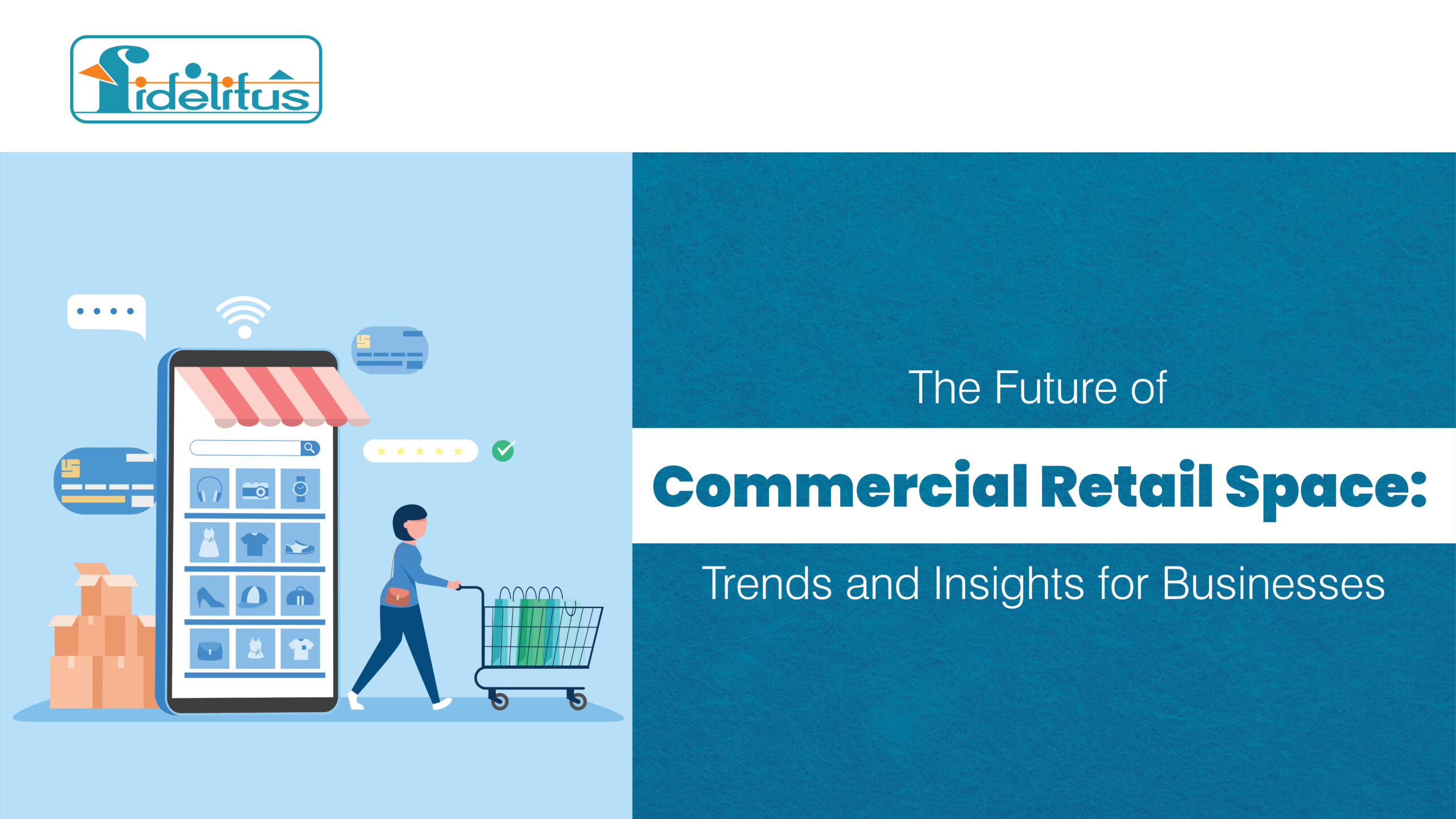In today’s rapidly evolving business landscape, understanding the trends and insights shaping the future of commercial retail space is crucial for businesses to stay competitive. The rise of e-commerce, changing consumer behaviors, and technological advancements have significantly impacted the retail industry. In this article, we will explore key trends and insights that businesses should consider when navigating the future of commercial retail space.
Trend 1: Embracing Omnichannel Retailing
- With the increasing popularity of online shopping, businesses need to adopt an omnichannel retail strategy that seamlessly integrates online and offline experiences.
- A survey conducted by Fidelitus Corp found that 82% of consumers research products online before making a purchase, highlighting the importance of a strong online presence for retailers.
- Integrating technologies like augmented reality (AR) and virtual reality (VR) into the retail experience can provide customers with immersive experiences and bridge the gap between online and offline shopping.
- To attract and retain customers, businesses are focusing on creating experiential retail environments that go beyond traditional brick and-mortar stores.
- Incorporating interactive elements, such as pop-up installations, live demonstrations, and interactive displays, can enhance the shopping experience and drive foot traffic.
- Data from Fidelitus Corp reveals that businesses that offer unique in-store experiences see an average increase in sales by 20% compared to traditional retail formats.
Trend 3: Incorporating Sustainable Practices
- With growing concerns about climate change and environmental sustainability,
businesses are increasingly incorporating sustainable practices into their retail spaces. - Using eco-friendly materials, implementing energy-efficient lighting systems, and adopting recycling programs are some ways businesses can showcase their commitment to sustainability.
- According to a survey by Fidelitus Corp, 64% of consumers consider sustainability as a factor when making purchasing decisions, indicating the importance of ecofriendly practices for businesses.
Trend 4: Leveraging Data and Analytics
- The availability of data and advanced analytics tools provides businesses with valuable insights into consumer behavior and preferences.
- By leveraging data, retailers can personalize the shopping experience, optimize inventory management, and make data-driven decisions regarding store layouts and product placements.
- Fidelitus Corp’s research indicates that businesses that effectively use data and analytics experience a 15% increase in conversion rates and a 20% reduction in operational costs.
Trend 5: Flexibility and Adaptive Spaces
- The future of commercial retail space lies in flexibility and adaptability. Businesses need to create spaces that can quickly adapt to changing consumer demands and market trends.
- Modular store designs and flexible layouts allow retailers to rearrange their spaces based on seasonal trends, promotional campaigns, or evolving product assortments.
- Fidelitus Corp’s survey found that businesses that implement flexible store designs experience a 25% increase in customer satisfaction and a 10% decrease in store renovation costs.
Trend 6: Integration of Artificial Intelligence (AI) and Automation
- AI and automation technologies are revolutionizing the retail industry by streamlining processes and enhancing efficiency.
- Chatbots and virtual assistants can provide personalized customer support, while automated inventory management systems can optimize stock levels and reduce out-of-stock situations.
- Fidelitus Corp’s data shows that businesses that implement AI and automation solutions witness a 30% improvement in customer service response times and a 15% reduction in inventory carrying costs.
Trend 7: Integration of Office Spaces in Mall and Retail Buildings
In line with the sustainability strategy and the evolving needs of businesses, a recent trend in India’s commercial retail space involves leasing and accommodating office spaces within mall and retail buildings. This innovative approach entails dedicating a few top floors of these buildings for office purposes, complete with separate entrances and dedicated spaces.
Benefits of Office Spaces in Mall and Retail Buildings
1. Optimal Space Utilization: Integrating office spaces in mall and retail buildings enables property owners to maximize the usage of available space. By repurposing the top floors, which were traditionally used for storage or utility purposes, these areas can now be transformed into revenue-generating office spaces.
2. Enhanced Convenience: Having office spaces within the same premises as retail establishments offers convenience to employees and visitors. It eliminates the need for commuting between separate locations, saving time and reducing transportation costs.
3. Synergy and Collaboration: The coexistence of office spaces and retail establishments fosters collaboration and synergy between different businesses. It allows for potential partnerships and cross-promotion, benefiting both the retailers and the office occupants.
4. Increased Footfall: Integrating office spaces in malls can boost footfall and overall visitor numbers. Professionals working in these offices may take advantage of the retail offerings during breaks or after work, contributing to increased sales and customer engagement.
Driving Sustainability and Revenue Generation
Integrating office spaces in mall and retail buildings aligns with sustainability goals while providing additional revenue streams. Here’s how this trend contributes to sustainable practices:
1. Reduced Carbon Footprint: By having office spaces within retail buildings, professionals can minimize their commuting distances, leading to a reduction in carbon emissions. This aligns with the broader sustainability efforts to combat climate change.
2. Energy Efficiency: Mall and retail buildings often incorporate energy- efficient practices, such as optimized HVAC systems, lighting, and water conservation measures. Extending these practices to the integrated office spaces ensures sustainability and cost savings.
3. Revenue Diversification: Leasing office spaces within mall and retail buildings diversifies revenue streams for property owners. Instead of relying solely on retail rentals, income from office space leases adds stability and resilience to the overall
financial performance.
💡 Conclusion
As businesses navigate the future of commercial retail space, it is crucial to stay informed about the latest trends and insights. Embracing omnichannel retailing, creating experiential environments, incorporating sustainable practices, leveraging data and analytics, adopting flexible store designs, and integrating AI and automation are key trends shaping the future of commercial retail space. By understanding and implementing these trends, businesses can enhance the customer experience, drive sales, and stay ahead of the competition in an increasingly dynamic and competitive market.
💡 By staying attuned to consumer preferences, harnessing the power of technology, and creating unique and engaging retail experiences, businesses can position themselves for success in the evolving retail landscape. It is important to continually adapt and innovate, keeping an eye on emerging trends and customer demands.
💡 The future of commercial retail space lies in embracing change, leveraging data-driven insights, and providing exceptional customer experiences. By staying agile and proactive, businesses can thrive and secure their place in the exciting and ever-evolving world of commercial retail










